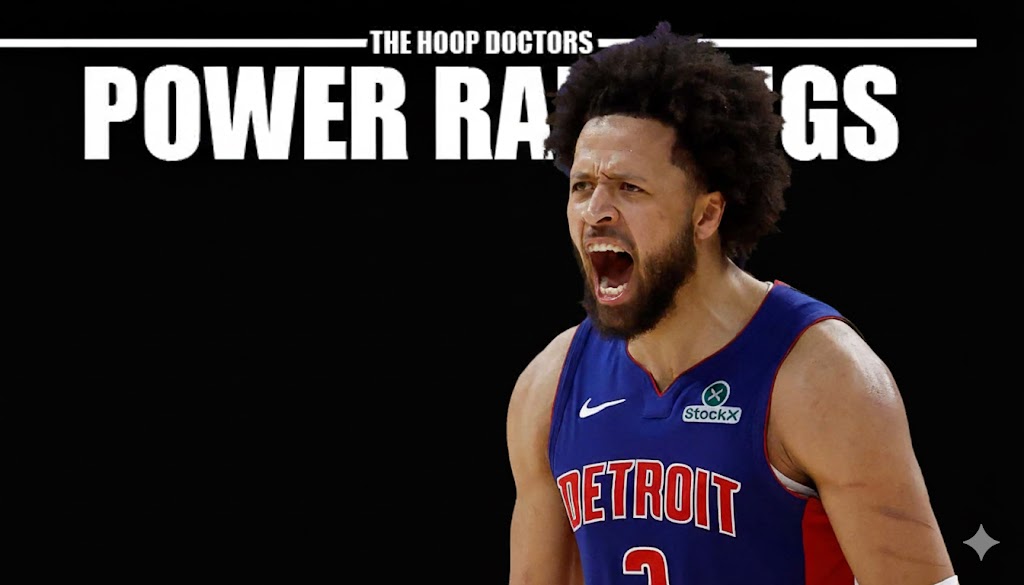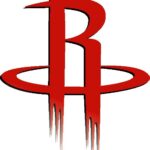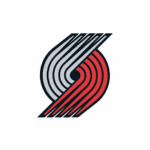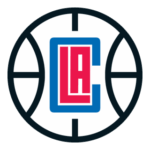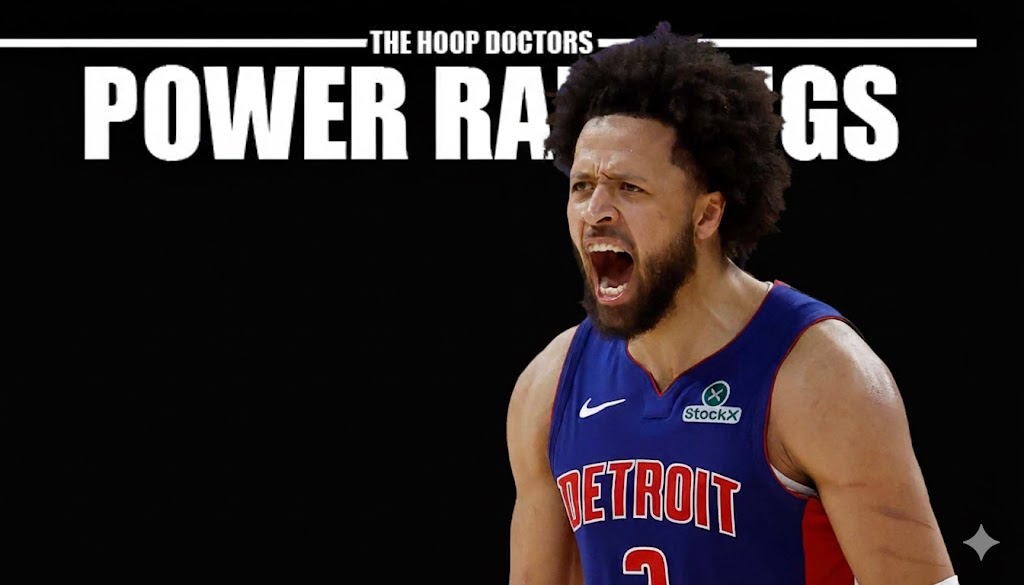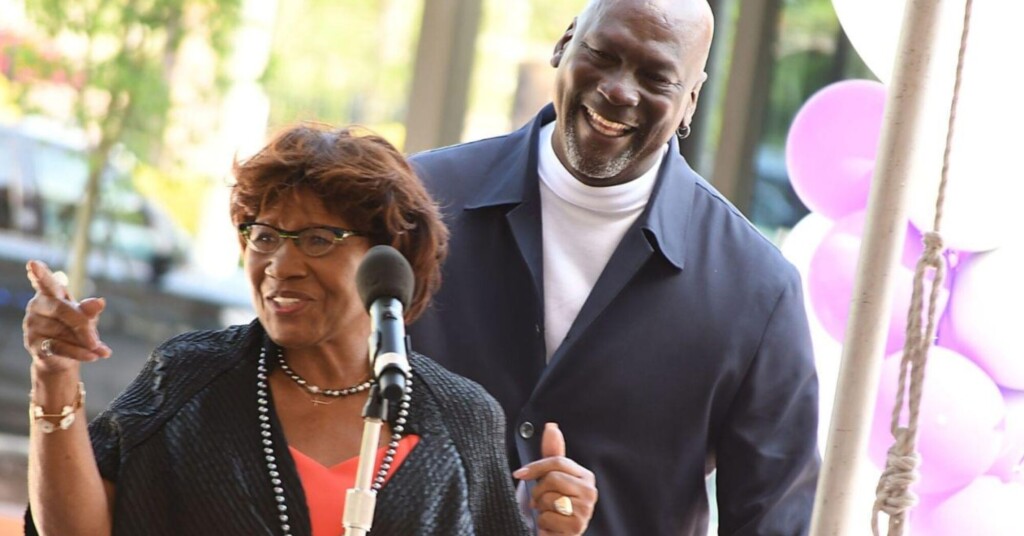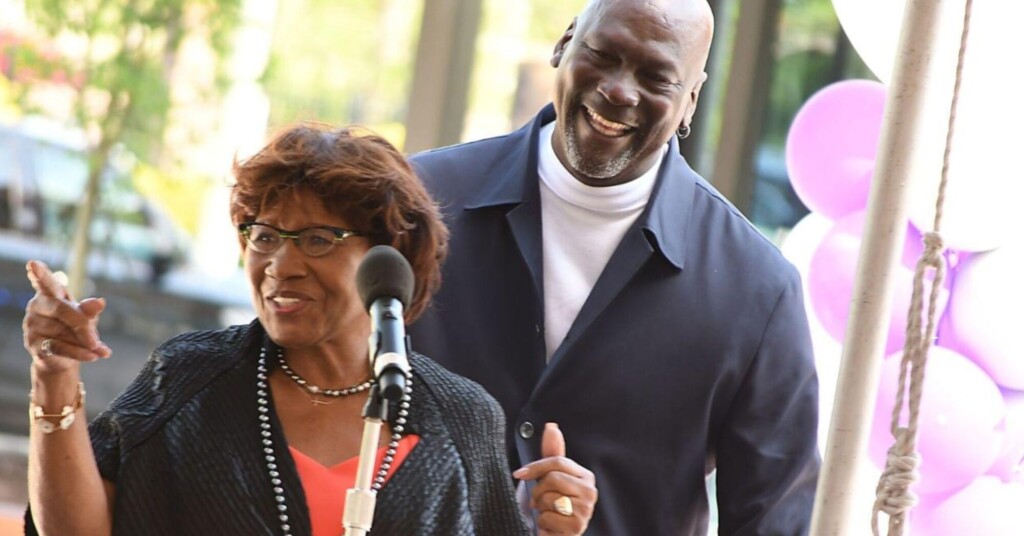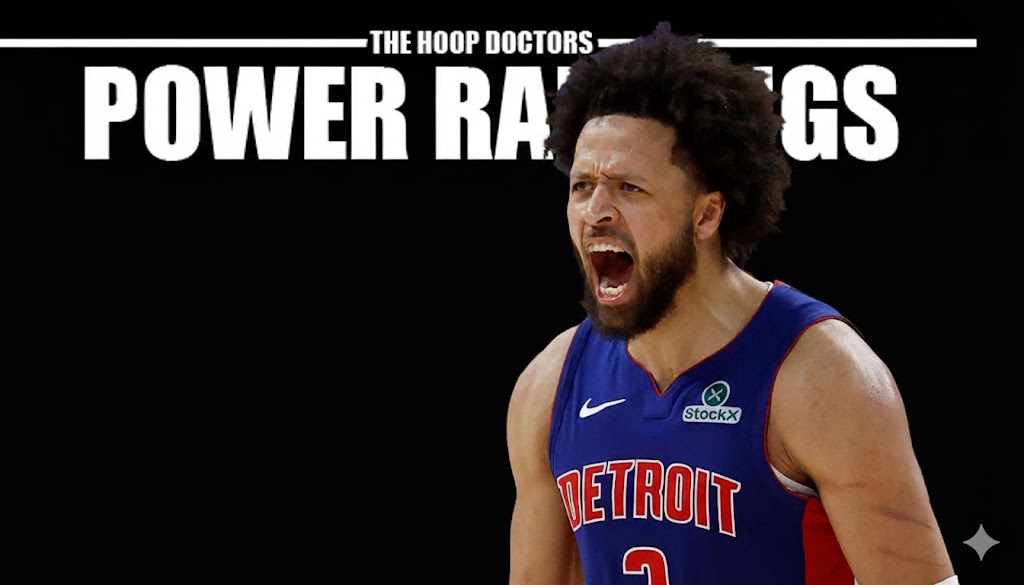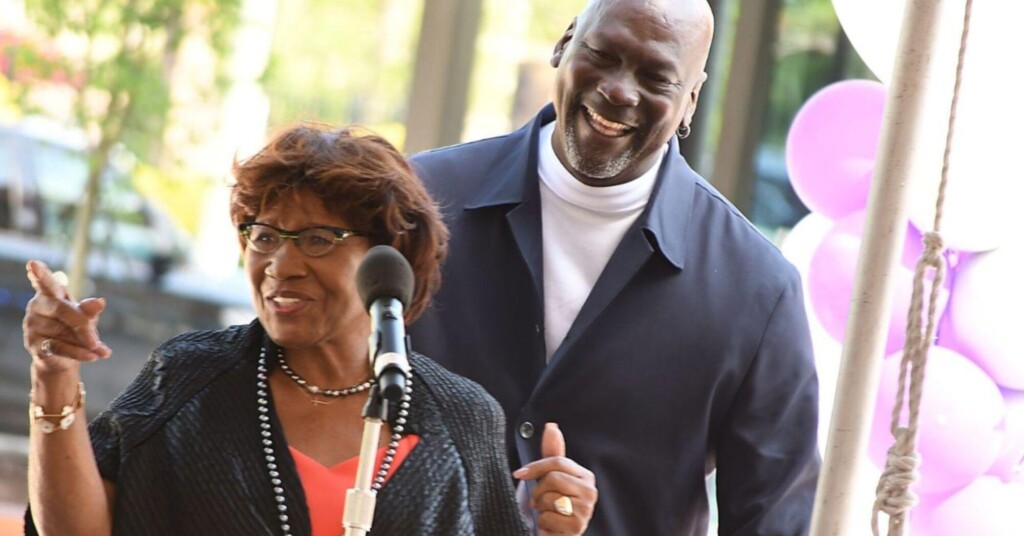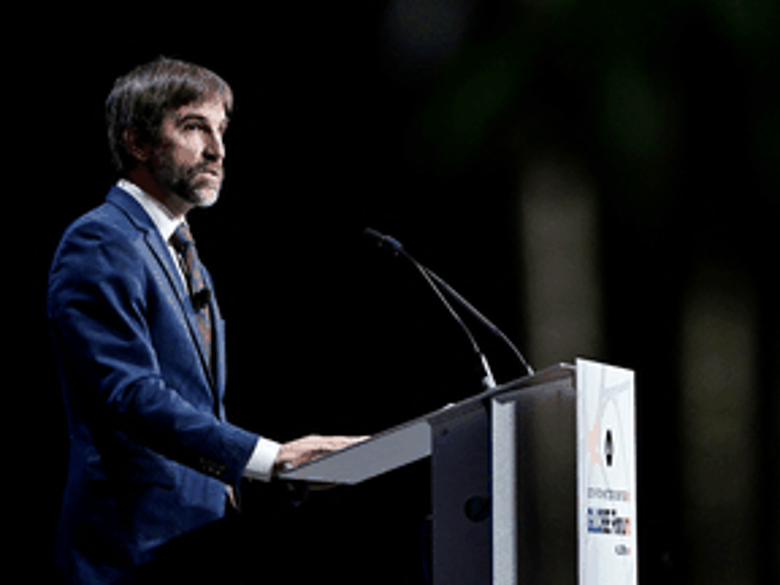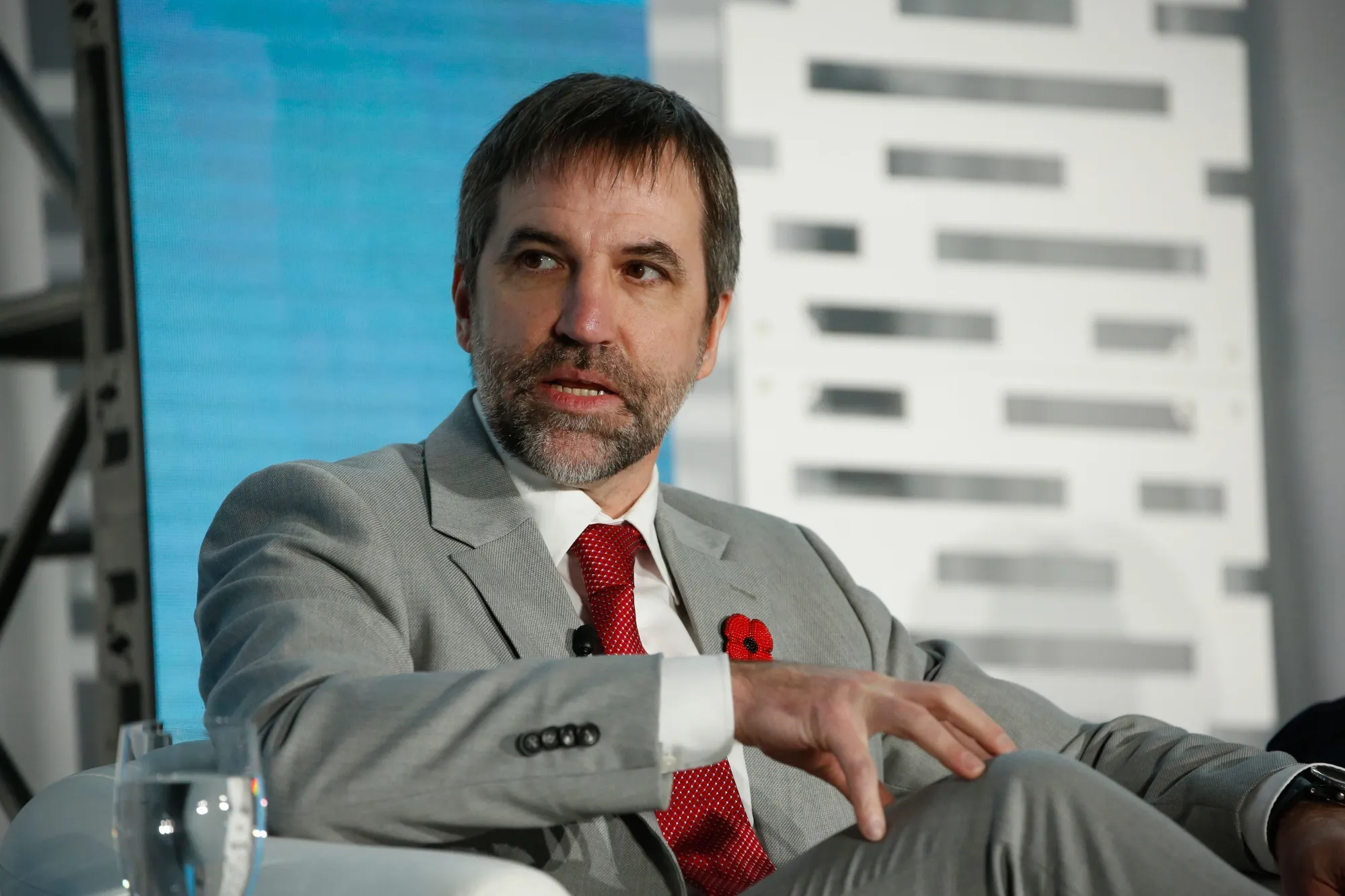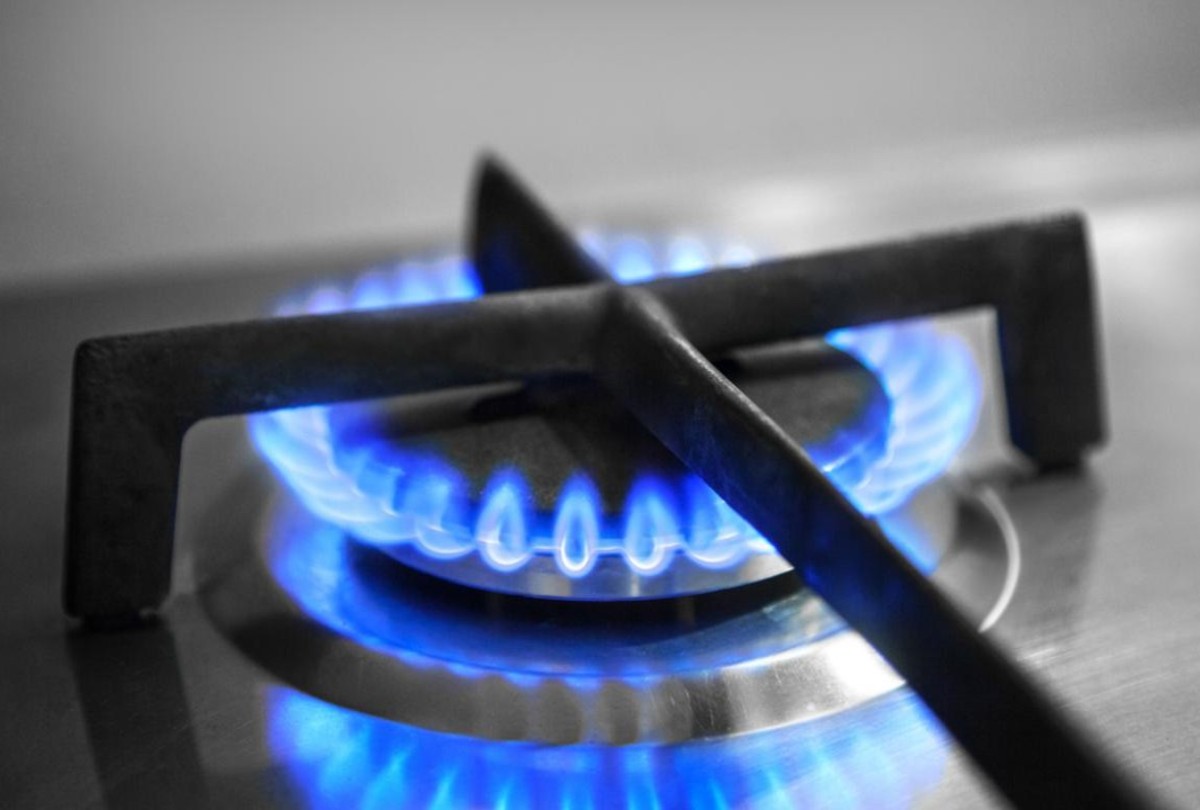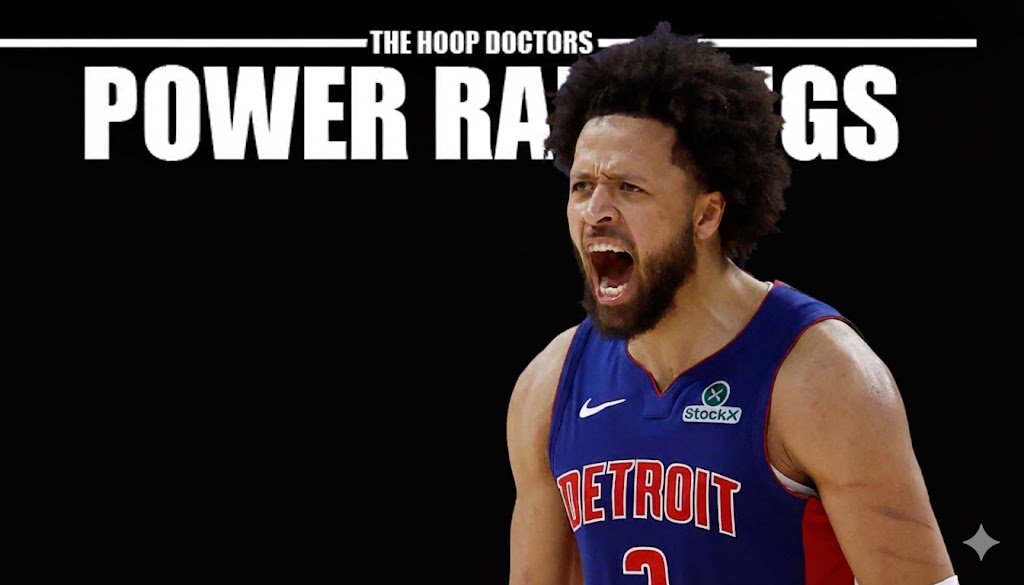
With roughly a month of the 2025–26 season in the books, the preseason storylines have given way to on-court reality — and the NBA Power Rankings look a lot different than many expected. Surprise risers like Detroit and Toronto have ripped through November, while familiar powers in Oklahoma City, Denver, and Houston are already separating from the pack. A few slow starters are beginning to find their groove, but others are staring down the possibility that this just might be who they are.
At the top, the reigning champion Oklahoma City Thunder are off to a historically dominant start, blitzing opponents behind Shai Gilgeous-Alexander and a deep, versatile roster. Denver and Houston have matched that pace with elite offenses, while the Lakers and Spurs have joined the contender tier thanks to star power and improved supporting casts. In the East, the Pistons have stunned the league with a double-digit win streak and the Raptors have quietly turned into a giant-killer, stacking quality wins behind a balanced attack.
On the other end, injuries and uneven play have buried teams like the Pacers and Wizards near the bottom of the standings, with long losing streaks and defensive issues they haven’t been able to patch. The Nets and Hornets are also stuck in the mud despite some bright spots from their young cores, while the Clippers’ aging roster and mounting injuries have dragged them into the early-season danger zone. For rebuilding groups like Utah and Washington, the focus has already shifted from wins and losses to development, while a few “on-paper” contenders are scrambling to fix structural flaws before it’s too late.
With that context in mind, here are The Hoop Doctors’ 2025–26 NBA Power Rankings based on how teams are actually playing right now — starting with the champs.
|
Oklahoma City ThunderThe champs look even scarier than last year, steamrolling opponents with a ruthless blend of shooting, length, and defensive versatility. Shai Gilgeous-Alexander is playing like the best player in the world, and their depth lets them blow teams out even on off nights. |
||
|
Denver NuggetsNikola Jokic has the offense humming again, and Denver’s starting five still looks like a cheat code when it’s healthy. They’ve kept pace with OKC in the West and rarely look stressed in crunch time, which is exactly what you want from a veteran contender. |
||
|
Houston RocketsHouston has turned into a buzzsaw, combining Kevin Durant’s late-career scoring clinic with a fearless, improving young core. They’ve won the vast majority of their recent games and built a top-tier offense that travels on the road and holds up against elite defenses. |
||
|
Detroit PistonsThe Pistons have been the shock of the season, riding an 11-game heater and locking into an identity built on length, physicality, and relentless transition attacks. Cade Cunningham looks fully in command, and their young role players are suddenly winning all the little margin battles. |
||
|
Los Angeles LakersLeBron’s return and Luka Doncic’s improved conditioning have turned the Lakers into one of the league’s hottest teams almost overnight. When those two share the floor with competent shooting and active defenders, they look every bit like a group that can challenge for the title. |
||
|
San Antonio SpursVictor Wembanyama has dragged San Antonio out of the basement and into the real playoff conversation faster than anyone expected. Their offense is still learning to live through his unique skill set, but the combination of rim protection and stretch playmaking has made them a nightmare matchup on most nights. {index=5} |
||
|
Cleveland CavaliersCleveland hasn’t always looked smooth, but they’re stacking wins and still boast one of the better point differentials in the East. Donovan Mitchell’s shotmaking and Evan Mobley’s defensive range keep their ceiling high even when the offense bogs down for stretches. |
||
|
Toronto RaptorsAfter a shaky 1–4 start, Toronto has erupted, going on a blistering run with multiple players taking turns as leading scorers. Scottie Barnes looks like an All-Star again alongside Brandon Ingram and RJ Barrett, and the offense finally has enough creation to complement its disruptive defense. |
||
|
Minnesota TimberwolvesAnthony Edwards has fully embraced the franchise-player mantle, and Minnesota’s offense has followed his swagger. Paired with a defense that has tightened up around the rim, the Wolves have quietly played like a top-tier team for most of the last few weeks. |
||
|
Golden State WarriorsThe Warriors are no longer a nightly juggernaut, but when Stephen Curry gets rolling, they still look like world-beaters. A strong recent stretch, including statement wins over quality opponents, has pushed them firmly back into the early-season contender tier. |
||
|
Philadelphia 76ersJoel Embiid is working his way back toward peak form on a minutes limit, and whenever he plays the Sixers look terrifyingly efficient. The supporting cast has been good enough to bank wins even when he sits, which bodes well for long-term playoff health. |
||
|
Milwaukee BucksThe Bucks have been good but not dominant, mostly because Giannis Antetokounmpo has already missed time and the non-Giannis minutes still look shaky. When he’s on the floor, though, Milwaukee’s offense and efficiency spike to elite levels, which keeps them firmly in the top tier of East threats. |
||
|
Miami HeatMiami has once again shrugged off injuries and lineup shuffles to grind out wins against tough competition. They’re not blowing anyone away, but the defense, shooting, and “next man up” mentality feel very familiar come springtime. |
||
|
Atlanta HawksThe Hawks have quietly stabilized after a rocky start, leaning on improved defense and breakout performances from their young core. Even with Trae Young in and out of the lineup, they’re stacking wins and showing a more sustainable identity on both ends. |
||
|
New York KnicksJalen Brunson continues to be the heartbeat of a Knicks team that is bruising people at home but still searching for consistency on the road. Their defense is playoff-caliber, yet they still feel one reliable secondary scorer away from pushing into the top ten. |
||
|
Phoenix SunsThe new-look Suns built around Devin Booker plus defense and shooting are starting to make more sense than last year’s awkward superteam. They’ve piled up wins lately and look like a much tougher out, even if their true ceiling still feels a step below the elite contenders. |
||
|
Orlando MagicOrlando shook off a sluggish start and has looked more like the rising power many expected, with Paolo Banchero setting the tone. Their defense is long and nasty, and new addition Desmond Bane has started to find a rhythm as a secondary creator. |
||
|
Boston CelticsEven without Jayson Tatum in stretches, Boston has defended well enough to hover around .500 and stay in the mix. The offense leans heavily on threes and system play, so when the shots fall they look great — but the margin for error is thinner than in past seasons. |
||
|
Dallas MavericksPost-Luka, this version of the Mavs is more balanced defensively but still struggles to manufacture elite offense night after night. When their stars are healthy they can beat anyone, yet the lack of consistent shot creation drops them a tier below the true contenders for now. |
||
|
Chicago BullsChicago came crashing back to earth after a hot start, but the overall body of work still looks respectable. If they can get fully healthy and keep up their improved ball movement, they’ll be in the thick of the East’s middle-class playoff race. |
||
|
Portland Trail BlazersDeni Avdija has blossomed into a legitimate go-to scorer, giving Blazers fans a new star to rally around sooner than expected. They’re still learning how to close games and protect leads, but their energy and defense suggest this won’t be a typical tanking year. |
||
|
Sacramento KingsIt’s been a brutal opening month for the Kings, whose defense has been shredded and whose offense no longer feels potent enough to compensate. There’s already chatter about bigger structural changes, and for a team built to win now, that’s a worrying sign. |
||
|
New Orleans PelicansWhen Zion Williamson is on the floor, the Pelicans can look like a top-10 offense; the problem is that the lineups around him keep changing. The lack of continuity and defense has left them stuck in that frustrating zone between “dangerous” and “reliably good.” |
||
|
Memphis GrizzliesMemphis still competes hard every night and shows flashes of its old defensive identity, but the offensive firepower just isn’t there consistently. Unless they get healthier and find more perimeter scoring, they’re staring at a season on the wrong side of the play-in line. |
||
|
Utah JazzThe Jazz have fully embraced the rebuild, handing heavy minutes to their young guards and living with the mistakes. There are some fun offensive explosions here and there, but the defense and late-game execution scream “development year” rather than playoff push. |
||
|
Los Angeles ClippersThe Clippers’ age and injury risk have caught up to them quickly, with a long losing streak and extended absences from key stars. Even when Kawhi Leonard is available, the roster no longer looks deep or dynamic enough to seriously scare the top of the West. |
||
|
Charlotte HornetsLaMelo Ball’s latest absence has pushed the Hornets back into lottery territory, even as rookie Kon Knueppel flashes serious star potential. They’re competitive in spurts, but the defensive issues and lack of veteran stability keep turning promising nights into losses. |
||
|
Brooklyn NetsBrooklyn sits near the bottom of the East with one of the league’s ugliest point differentials and a defense that can’t get stops. The silver lining is that their young wings are getting real reps, but for now this looks more like a long-term project than a quick reset. |
||
|
Indiana PacersThe Pacers have been absolutely decimated by injuries, with Tyrese Haliburton’s Achilles issue headlining a brutal start. Without their offensive engine, they’ve fallen to the very bottom of the standings and rarely look competitive for 48 minutes. |
||
|
Washington WizardsWashington sits dead last with just a single win, a double-digit losing streak, and a defense that bleeds points every night. This is a full-on development and lottery season, with the front office clearly more focused on future picks than present-day results. |
The post NBA Power Rankings: Pistons are Red Hot! appeared first on The Hoop Doctors.

